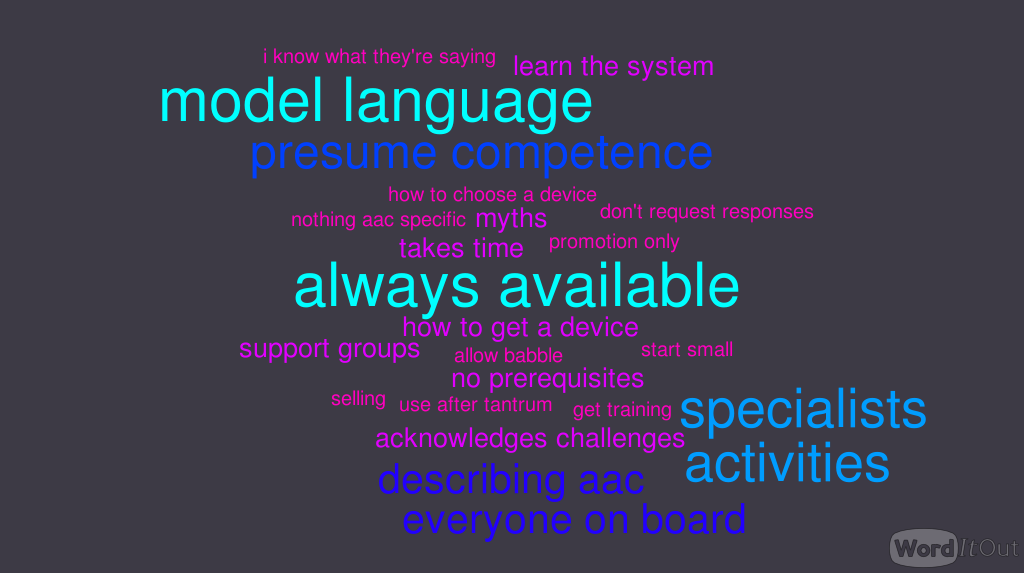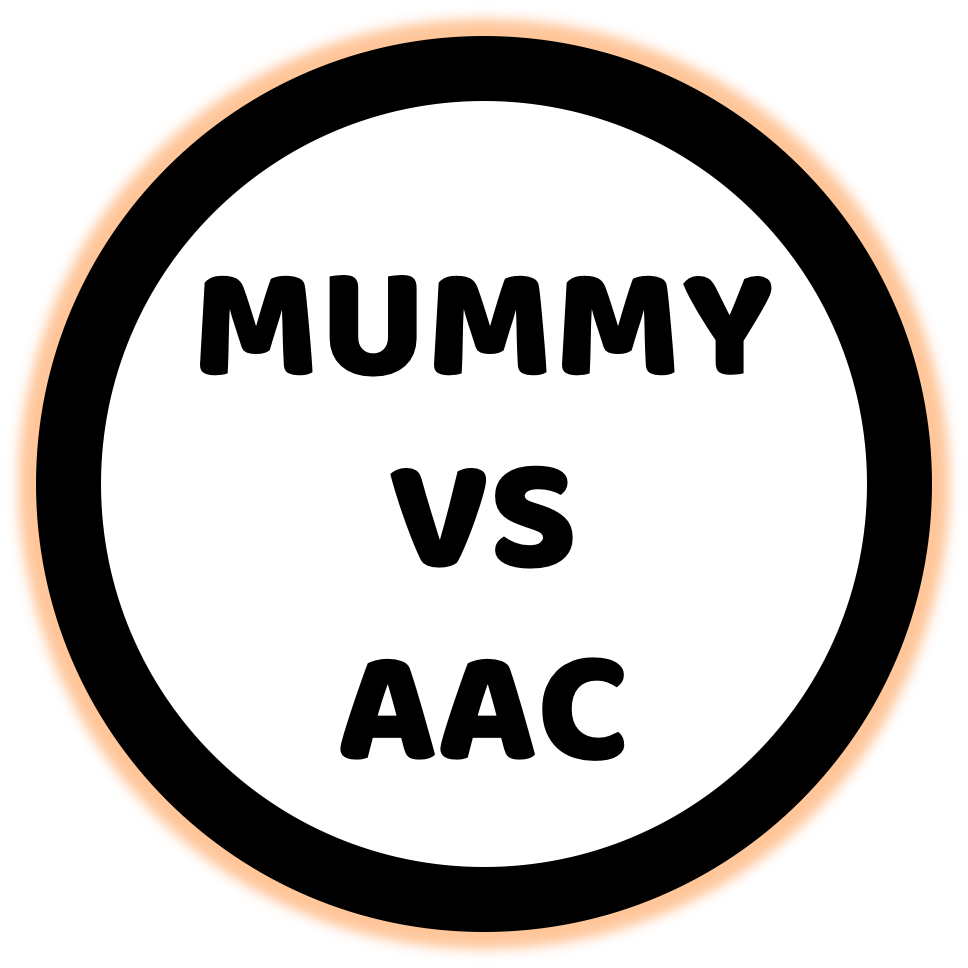For the last three and a half years, I’ve been writing, speaking and learning more about AAC. I’ve also been living it with AAC day and day out for 8 years now. I began this blog and social media to share real experiences of implementing AAC at home. Learning and growing together as a family has led me to rebalancing the place of AAC (and, in this context, I mean, aided AAC powered and paper) in our lives at home.
I want to make one statement very clear – this post is in no way an argument against AAC. I’m trying to redress the balance in some of the narratives about AAC in a way that honours those with the most complex learning and physical needs.
This post is an invitation to clinicians, influencers, teachers and AAC professionals to think carefully about the messages we send parents about AAC and it’s implementation and it’s place in good enough parenting for children with communication needs, in particular those with severe profound and multiple learning disabilities.
Rebalancing the Primacy of Symbolic Language
All forms of paper and powered AAC focus on the primacy of developing symbolic knowledge. Whether using symbols or the alphabet, all of these tools seek to mirror spoken symbolic language.
On the other hand, many common definitions of AAC include non-verbal communication.
‘AAC means all of the ways that someone communicates besides talking.’ And includes ‘gesture and facial expression’. (American Speech and Hearing Association).
‘AAC is a set of tools and strategies that an individual uses to solve everyday communicative challenges. Communication can take many forms such as: speech, a shared glance, text, gestures, facial expressions, touch, sign language, symbols, pictures, speech-generating devices, etc. Everyone uses multiple forms of communication, based upon the context and our communication partner. Effective communication occurs when the intent and meaning of one individual is understood by another person. The form is less important than the successful understanding of the message.’ (International Society for AAC).
In spite of these broad definitions, what I see in social media and training around AAC is the primacy of robust language system and literacy. It feels like approaches that do not have these components are inherently criticised. Sometimes they are explicity criticised. The implication is that if parents and professionals are not following these principles they are failing the children they support.
In addition the term non-verbal to describe communication has been largely replaced by non-speaking. I do welcome this. For people who have language skills but not the motor skills to convey the complex ideas they want to share then this is right. My concern is this shift terminology does as a side-effect marginalise those for whom non-verbal communication (and I mean, non-verbal, non-symbolic communication) is primary, like my daughter. Yes, she has access to AAC and is beginning to develop symbolic language skills, but these are not yet primary for her (and may never be). I’m trying to build a world for her that’s OK either way.
Rebalancing the Advice for Parents about Communication
I often see on social media comments about how to persuade parents who say things like ‘I understand everything at home’ to implement AAC anyway.
My invitation is that instead of saying ‘ yes, but you need to do more at home so that everyone can understand them’’ we say ‘ that’s great – sounds like you’re well tuned in at home – help me understand how and what works so we can do the same’ before we talk about giving families something else to do and give them some confidence in what they’re already getting right.
When preparing for a presentation I did in June. I did a Google search ‘AAC advice for parents’. This is a word cloud of the results.

oth of the items that came out biggest, model language and always available I see as high-pressure strategies.
I encourage you to picture this scenario. A parent of a recently diagnosed child with complex learning, physical and medical needs has heard about AAC and does this Google search because she doesn’t have anyone supporting communication at home.
This dominant narrative of model all the time and AAC available all the time doesn’t necessarily support her, doesn’t acknowledge her feelings of isolation and doesn’t address the first communication need, which may well be just to find ways to observe and connect and enjoy her time with her child. Tucked away in the advice are things like finding support groups and an acknowledgement that doing this is challenging which may well be what she needs to hear first.
My Suggestions for Rebalancing in 2024
Influencers and creators make social media content that places AAC in a wider communication context.
Professionals who work with families find out what’s going well, and begin with that. Giving support to understand communication as it is and respect it.
Maybe we don’t throw out the term non-verbal but talk about ‘non-verbal communicators’. This way we are describing the communication, not the person and acknowledging that non-verbal communication is a valid way of communicating.

4 Responses
Thankyou for giving me a much better way to describe my grandson to some family members who don’t see him often and always ask the question “is he speaking yet..?”! He’ll no longer be “non-verbal”, he’s a non-verbal communicator ! It’s a far more accurate AND positive description as he communicates in a variety of ways…
k0ynwr
h6gjh9
gpmrgq